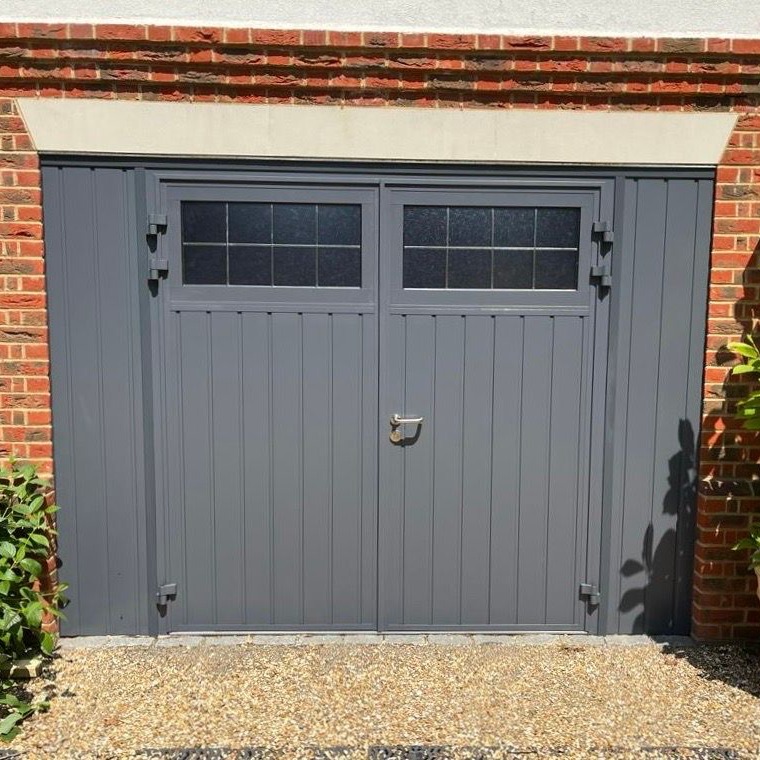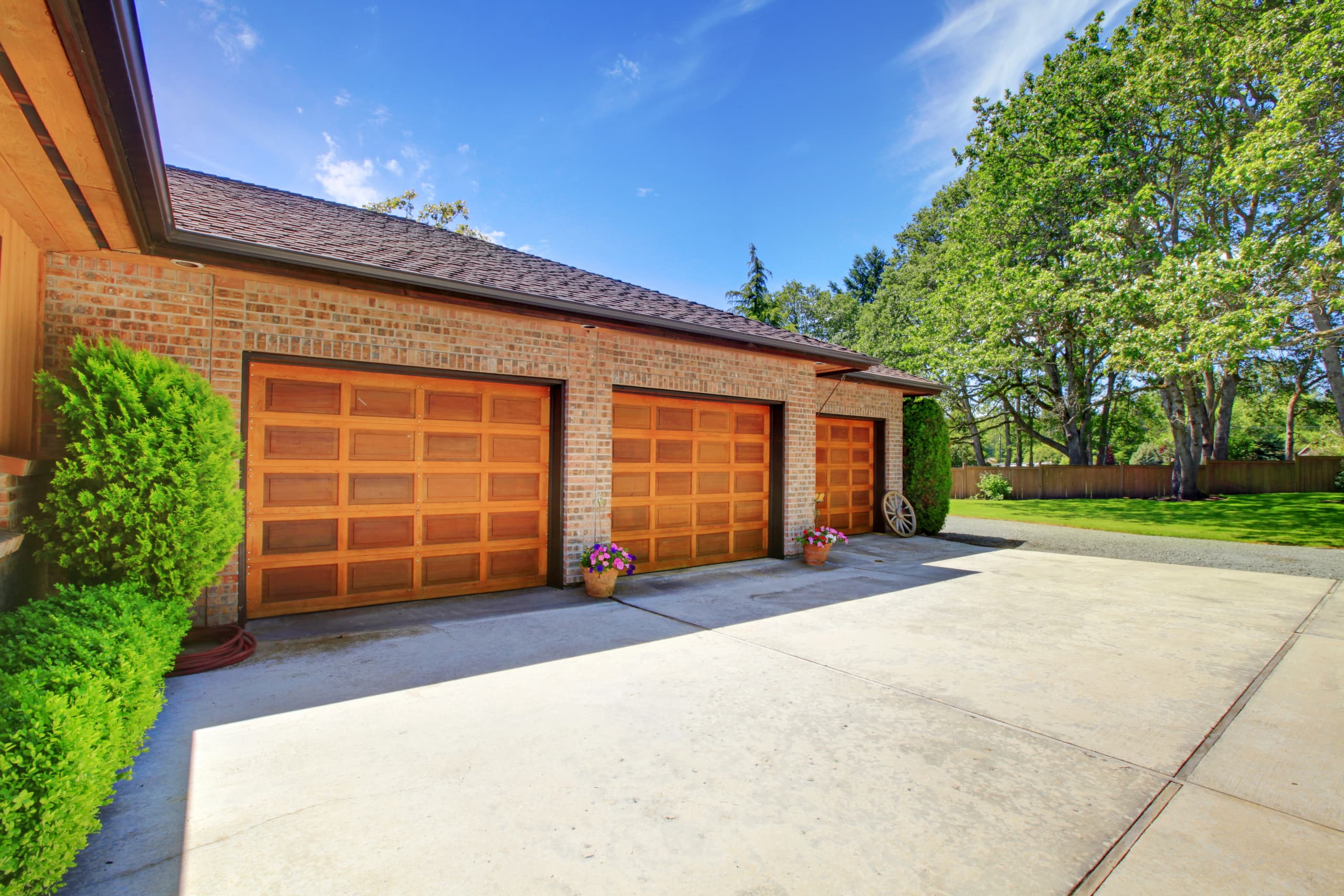Tips for Inspecting Your Garage Door Correctly

Your garage door is one of the largest moving objects in your home, yet it’s often overlooked when it comes to regular maintenance and inspections. A well-functioning garage door not only provides convenience and security but also ensures the safety of your family and property. Neglecting to inspect and maintain your garage door can lead to costly repairs, potential safety hazards and even replacement.
By taking the time to conduct a thorough inspection, you can spot early signs of wear and tear and ensure that all components are working correctly. If you’re unsure where to start, we’ve put together a comprehensive guide to ensure you’re inspecting your garage door properly and when to call in the professionals for garage door repairs.
Door Panels
The door panels are the most visible and prominent part of your garage door system. During your inspection, you’ll want to pay close attention to the condition of these panels. Start by thoroughly examining each panel for any dents, cracks, holes or other visible damage. Even minor dents can compromise the structural integrity of the panels over time, potentially leading to more extensive issues down the road.
Next, inspect the panel finish – look for signs of fading, peeling or chalking, which can be indicators of UV damage or age. A well-maintained finish not only enhances the appearance of your garage door but also protects the underlying material from the elements.
Don’t forget to check the weatherstripping around the panels too. This crucial component helps seal the gaps between the door and the frame, preventing air leaks, moisture intrusion and draughts. Look for any cracks, tears or areas where the weatherstripping has become loose or detached.
Track System
The track system is a critical component of your garage door, responsible for guiding the door panels smoothly during operation. Proper inspection and maintenance of the tracks are essential to ensure the safe and efficient performance of your garage door.
Begin by familiarising yourself with the function of the tracks – the horizontal tracks at the top of the door system support the weight of the door panels when they’re in the open position, while the vertical tracks on either side guide the panels as they move up and down. During your inspection, carefully examine the tracks for any debris, obstructions or build-up that could impede the smooth movement of the door.
Check for any signs of misalignment or bending in the tracks. Properly aligned tracks should run parallel to each other, with no visible kinks or dents. Misaligned tracks can cause the door to bind, leading to increased strain on the opener and potentially causing damage to the door panels.
Fix and Repairs
- We can help with those wonky garage doors, annoying dents, and dusty garages.
Springs
The springs counterbalance the weight of the door panels, making it easier to open and close the door. There are typically two types of springs used: torsion springs and extension springs. Inspecting these components is essential for ensuring the safe and proper operation of your garage door.
Torsion springs are the most common type found in modern garage door systems. These cylindrical springs are mounted horizontally above the door opening and are responsible for lifting and lowering the door panels. When inspecting torsion springs, be extremely cautious as they are under immense tension and can cause serious injury if handled improperly.
Look for any signs of rust, cracks or excessive wear on the torsion springs. These can indicate that the springs are nearing the end of their lifespan and may need to be replaced. It’s also essential to check the condition of the spring brackets and mounting hardware, ensuring they’re securely fastened and free from damage.
Extension springs, on the other hand, are typically found in older garage door systems. These stretchy springs are mounted perpendicular to the door panels and assist in lifting the door by extending and contracting. When inspecting extension springs, look for any signs of wear and tear, which can compromise their ability to function properly.
Inspecting the Hardware and Accessories
In addition to the major components like the panels, tracks and springs, your door system also consists of various hardware and accessories that contribute to its overall functionality and efficiency. Overlooking these smaller components during your inspection can lead to potential issues down the road.
Start by examining the pulleys and cables that are responsible for lifting and lowering the door panels. Look for any signs of fraying or excessive wear, as well as any debris or obstructions that may be interfering with the smooth operation of the pulleys. If your garage door is equipped with additional accessories, such as keypads, remote controls or automatic locks, be sure to inspect these components as well. Test the functionality of the remotes and keypads, ensuring that they are communicating properly with the opener.
Don’t forget to lubricate any moving parts, such as hinges and bearings, to promote smooth operation and prevent premature wear. Use a high-quality lubricant specifically designed for garage door systems and follow the manufacturer’s recommendations for application.
When to Call a Professional
While many routine inspections and minor repairs can be performed by a handy homeowner, there are certain situations where it’s best to call in a professional garage door technician. Attempting to tackle complex issues or repairs beyond your skill level can not only lead to further damage but also pose serious safety risks.
In cases where the garage door opener or its safety features, like sensors, are malfunctioning, we recommend having a professional diagnose and repair the issue. Get in touch with the team at Wessex Garage Doors to book an inspection and we’ll be able to confidently diagnose and resolve the issue for you.

